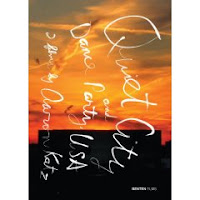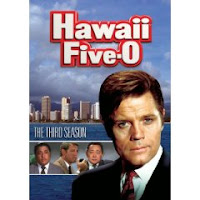
Written by Pollo Misterioso
Director Aaron Katz comes from Portland, Oregon and arms himself with low budgets, handheld cameras and unknown actors. In his two short films, both a little more than an hour long, he has scripted and directed two very simple stories that are both satisfying and deceptively minimal.
Nominated for an Independent Spirit Award, Quiet City captures the simplistic sophistication of two human beings just interacting. This sounds like it could be so easy to do, but the narrative has to go somewhere, be a pleasurable experience, and the film succeeds.
Jaime travels to New York from Atlanta to visit her friend. Unfortunately when she cannot get in touch with her, she is left not knowing where to go or what to do. She asks a stranger, Charlie, for directions to a certain diner and from there they begin their two-day stay with one another. In reality they don’t really do anything that is all that exciting; they drink wine out of cheap mugs, give each other haircuts, play videogames, etc. One of the most charming scenes has Charlie and Jaime playing music together on a run-down keyboard, even though neither of them plays the keyboard very well.
The characters are ordinary. Both Charlie and Jaime are not physically striking, but in the way they interact and slowly develop for the viewer and for each other, they become beautiful and interesting to watch. What may seem awkward at times, with extreme close ups on their chins, eyes or other facial reactions creates an honest relationship between the characters and the viewer—like we are a part of this everyday conversation.
What is so refreshing about this simple story is that the events that take place and each individual conversation means nothing on its own, it is a collective feeling that comes from getting to know someone.
Katz interjects the story development between our two main characters with shots of the city that initially feel out of place, but become small pauses reflecting on the simple beauty in everything in New York City. Katz does a wonderful job at making it seem like the city is asleep the entire time Jaime and Charlie are a part of it. It is as if they are the only people there.
Quiet City returns to a more simple kind of movie-making, where pictures tell the story and gratification comes from willing to believe that there is beauty in everything. Just like the final scene in which Charlie and Jaime take a metro ride home, allow yourself to just watch, let the story take you away.
Dance Party, USA, which Katz made first, again deals with relationships, but through the harsh and stunted eyes of teenagers. It focuses on two teenagers, Jessica and Gus and their interaction at a Fourth of July party that turns into them liking one another. Gus is hard to like because of the way he talks about women and his naïve and animalistic views of sex. As for Jessica, she finds peace in her solitude, never really being a part of anything. When they both decide to take a breath from the party, they confide in one another and a ride home turns into a deeper connection between the two.
Dance is realistically unpretentious and raw which at times makes it seemed forced and hard to watch. But keep watching, it will grow on you and you won’t know why. It is not as smooth a ride as Quiet City, but Katz writes like he has experienced it, making the awkward moments on screen reminiscent of our own awkward conversations in high school.
Dance has even less of a forward plot. Our characters just act in their worlds, simply coexisting, but like Katz’ other film, the characters are isolated and our focus is completely on them. He has returned to the simplicity of a boy-meets-girl scenario in both of his films and, especially in Quiet City, it is refreshing and easy to watch. Sit back and enjoy, you will be pleasantly satisfied.
Quiet City and Dance Party, USA are two courageous films that prove that you do not need anything more than a camera and a love for making movies. In fact, the extras on both DVDs include commentary by the director and cast members that explain the ideas and process behind the films. It is especially interesting to listen to Katz’s commentary for Dance simply to learn about the process for making this low-budget film. On the that DVD there is also a short film featuring music composer Keegan Dewitt called “The Lunch Hour,” which is a funny short that proves their love of filmmaking.














